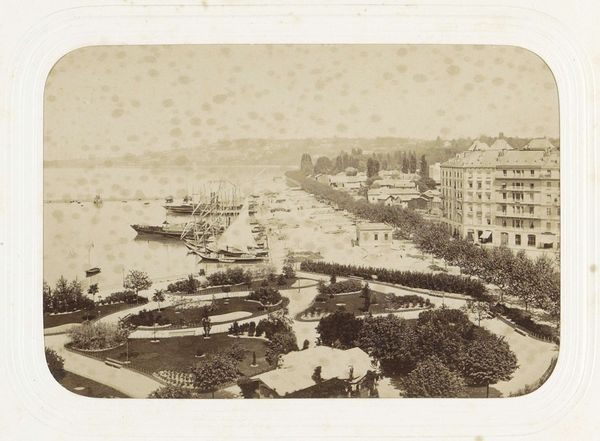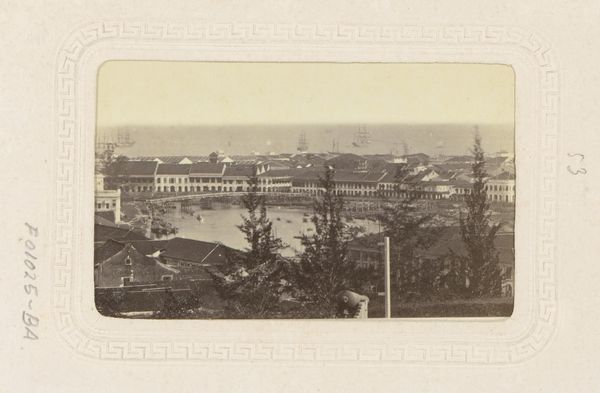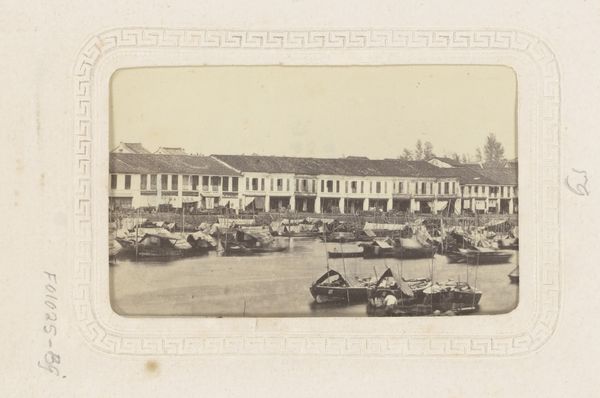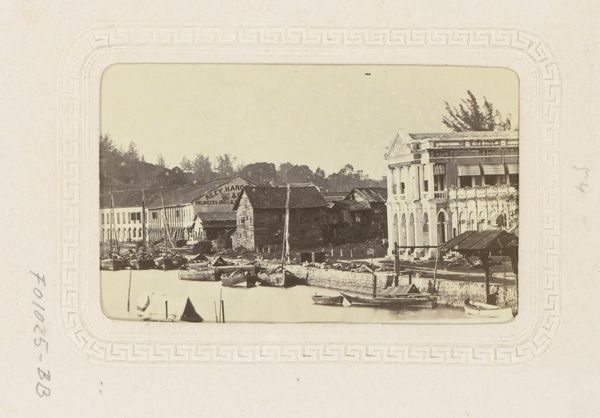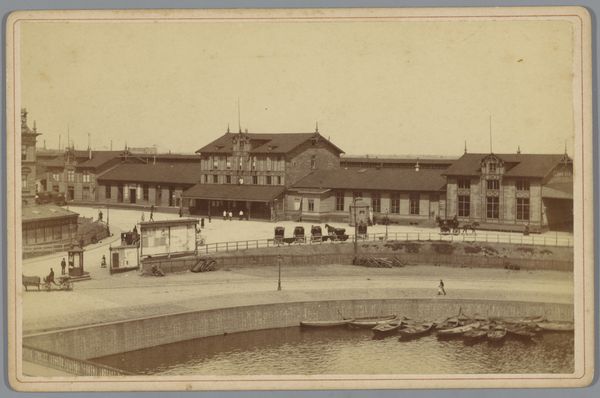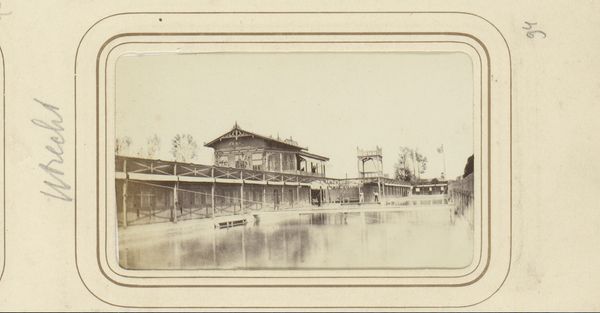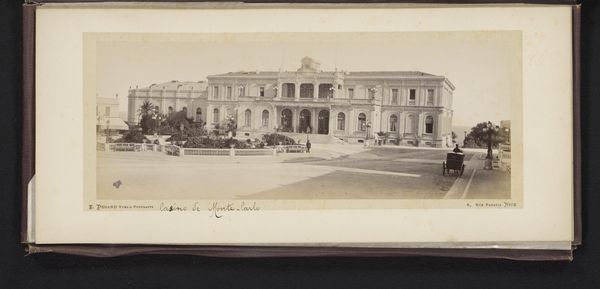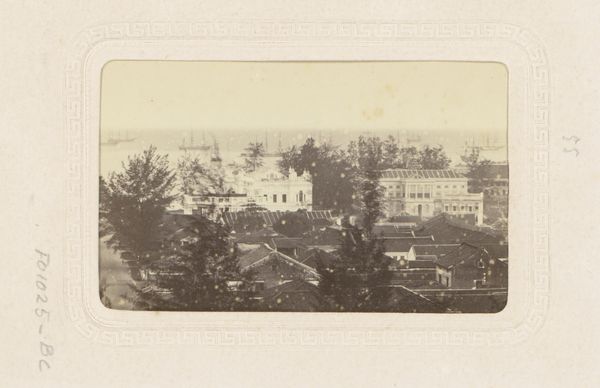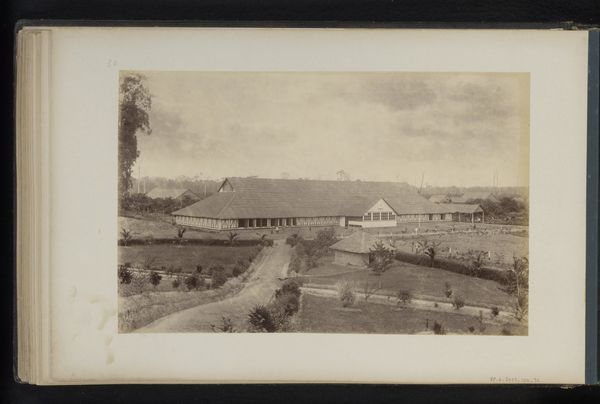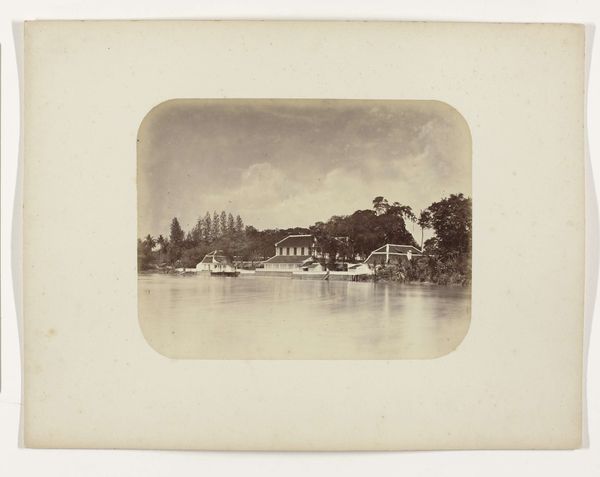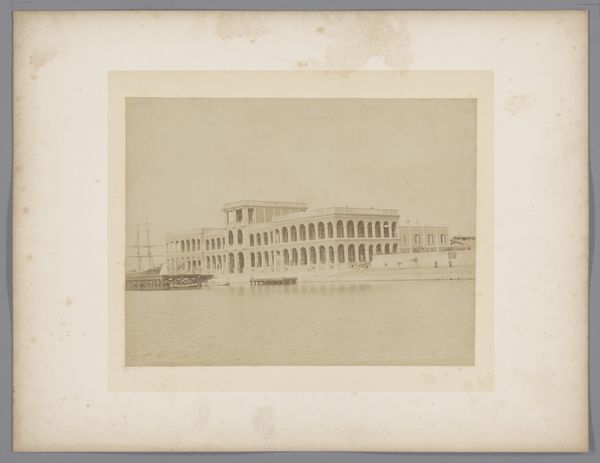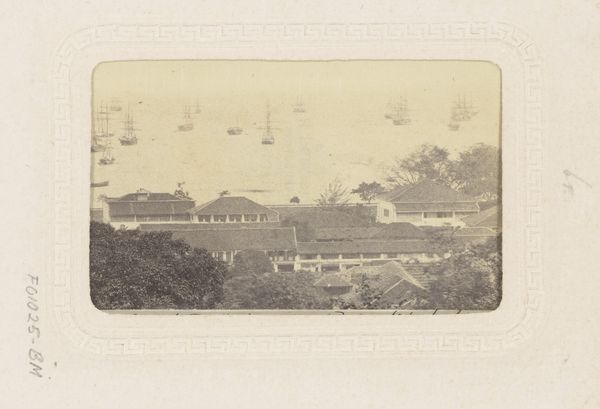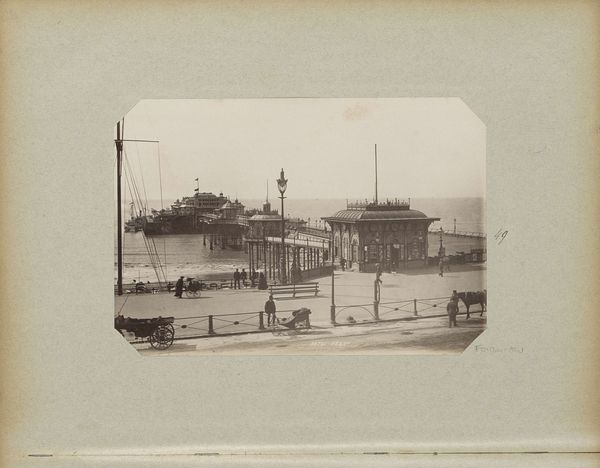
photography, albumen-print
#
landscape
#
river
#
photography
#
historical photography
#
orientalism
#
cityscape
#
albumen-print
Dimensions: height 85 mm, height 52 mm
Copyright: Rijks Museum: Open Domain
Editor: This albumen print, “Gezicht op Fort Canning met de Singapore River,” made sometime between 1867 and 1880 by G.R. Lambert & Co., is fascinating. There’s a sense of colonial stillness here, almost like a stage set. What do you see in this piece beyond just a pretty cityscape? Curator: It’s more than meets the eye. This image, seemingly a benign landscape, needs to be interrogated. What does it mean to frame Singapore in this way, through the lens of a European company? This perspective participates in constructing a narrative of the "Orient" for Western consumption, exoticizing and, in some ways, claiming ownership over the landscape. Who benefits from this representation? Editor: So, you’re saying we need to consider the power dynamics at play in creating and viewing this image? Curator: Exactly! The placid river, the ordered buildings – it all presents a picture of control and order. But whose order? This image, I argue, participates in a visual project of legitimizing colonial rule. Notice how Fort Canning looms over the scene, a symbol of power, literally elevated above the rest of the city. What stories are *not* being told here? Editor: The lives of the local population, perhaps? Their perspectives are definitely absent. Curator: Precisely! Think about the labor that went into building those "orderly" buildings, the displacement of indigenous communities, the exploitation of resources. All hidden beneath this veneer of picturesque beauty. Photography at this time often served as a tool of documentation but also a tool of power. How do you see that manifesting here? Editor: I now see it as a tool of control; what appears tranquil actually obscures the disruptive, often violent, reality of colonialism. Thanks for revealing so many hidden narratives. Curator: Understanding art through a lens of power helps us confront uncomfortable truths about the past and present. It encourages critical thinking, fostering a more inclusive perspective of both the work, its historical period, and its meaning.
Comments
No comments
Be the first to comment and join the conversation on the ultimate creative platform.
